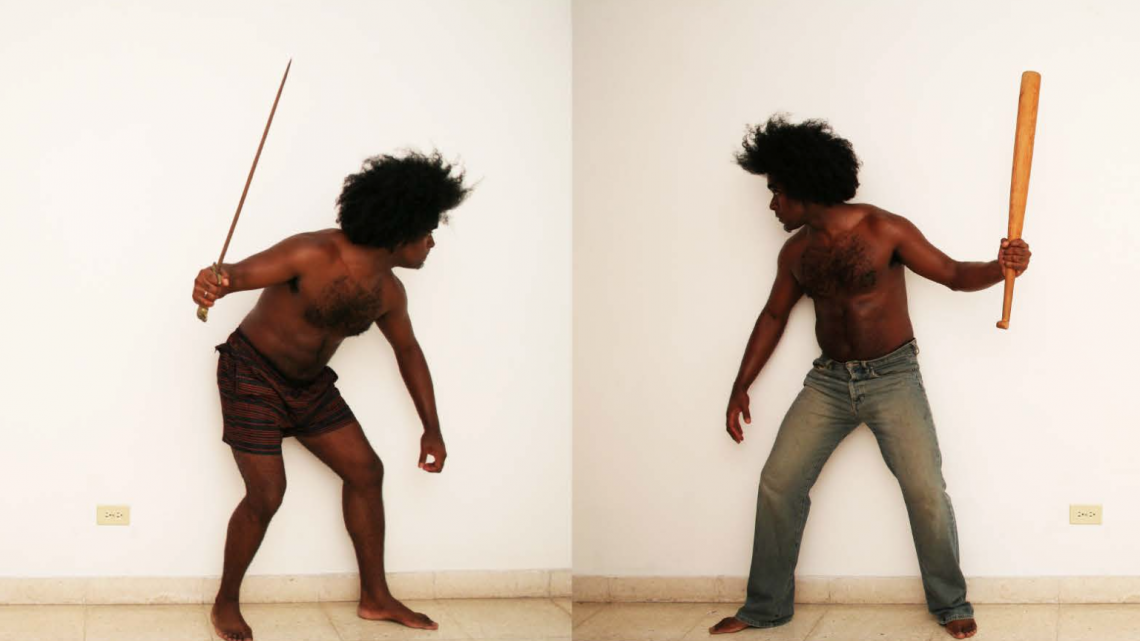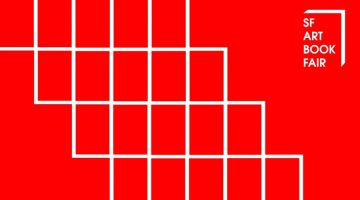[See Alexandre Arrechea’s contribution to SFAQ[Projects]]
Let’s start at the beginning, your childhood. I know your parents were very supportive of you becoming an artist and played a major role. Can you talk a bit about your formative years before going to art school in Havana?
I was born in Trinidad, Cuba. I spent most of my childhood there. I moved from Trinidad to study in Havana, but for fifteen years I was in Trinidad. I was born in a beautiful area of Trinidad in the center of the city, very well known for its architecture from the 18th century, so for me, Trinidad has always been a way to understand architecture. My father who was a machinist was always the center of our family. He was the one who carried the weight at home, and of course, I was always interested to see what the father does. It seems like I was nine, when for the first time I traveled to where my father worked and I discovered that it was a sugar mill. There he built pieces for the machines to continue working. It was very attractive to me, and very dangerous too, because my father told me, “I’m not supposed to bring you to this place, but I want you to know what I do.” So I was really excited to see those monster machines, and also to know that my father is the one who helped those machines continue working. Of course, that was a very exciting thing for a kid to know. I said to my father that I would like to be like him, to build machines like that and keep them working for the sugar mill. You have to realize that it is a city that is involved with sugar production, since the 17th century, so for me I felt that, in trying to be like my dad, I would be part of a history of Trinidad. Everyone wants to be like his or her father, but I also wanted to be a part of the history of my city. Those are the first years of my childhood.
Eventually, because my father did all these pieces for the sugar mill, he drew them at home. He would make a study on the pieces he had to build, and I’d look at him, what he did, making measurements, numbers—not with a measuring tape, but a caliper (pie de rey) that helps to calculate the size of relatively small objects. For me to see that particular instrument at home every day was very special. It is a tool that was part of the landscape of my house in Trinidad. And of course, my father at the time told me, “It’s nice that you are thinking of being like me, but I would like you to be something else!” Because of the way he drew the machines, I wanted to start drawing like him, so he encouraged me to do drawings and we started making little competitions between the two of us. And then my mother, one day, she handed me a box of colors so I could start doing more drawings. Then I continued doing drawings with paper that my father brought and the colors my mother gave me, and I started to build a pile of drawings—birds, houses, things in my surroundings, from books—this and that, and my mother asked why I don’t start giving the drawings to the family so they all have a piece of what I do. I loved the idea and started giving my drawings to my family and that gave me—granted me—the name El Pintor. The family started to call me “The Painter.” I was like, whoa, that’s cool. And my uncles who drove big trucks started to ask me to do paintings for their trucks, and I was involved in creating some weird things for my family, and I ended up going to an art school! It’s as simple as that!
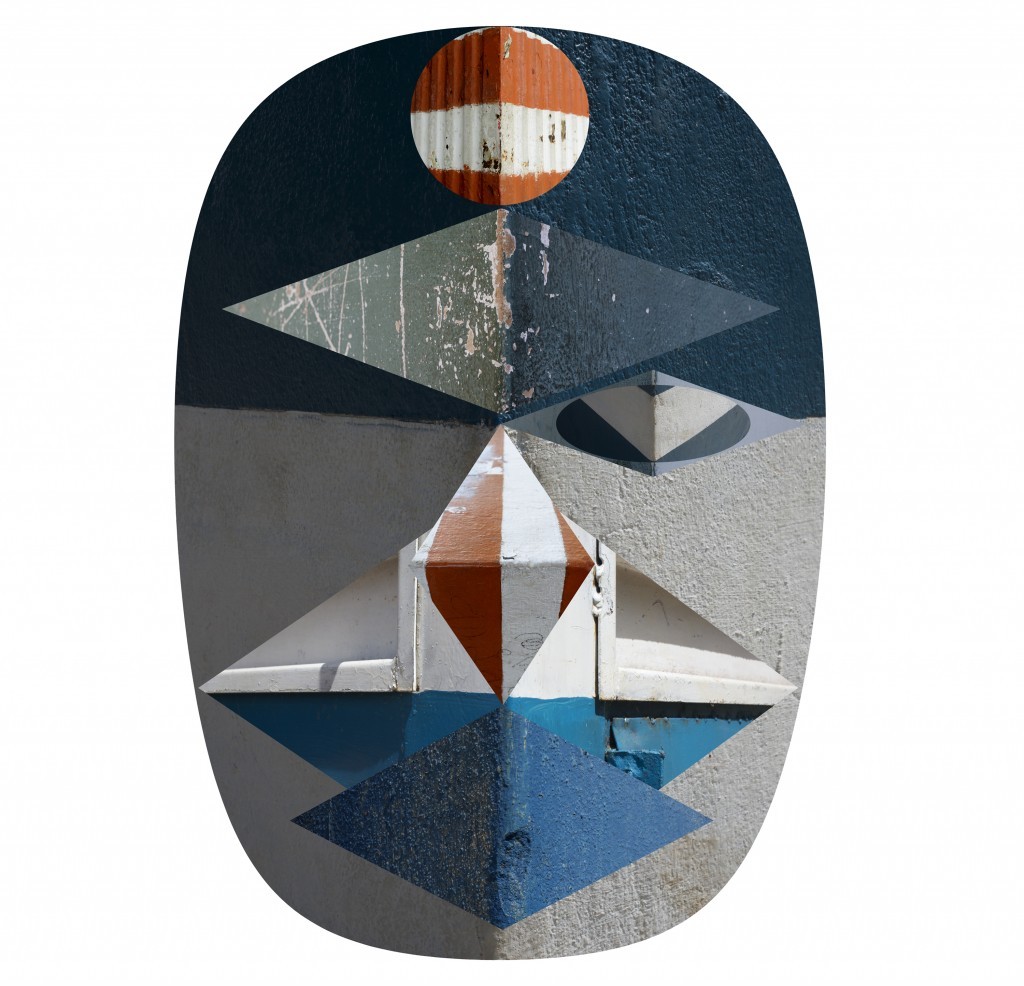
“Mask vedado,” 2014. Color print. 39″ x 37″. Courtesy of the artist.
What a beautiful story. A book was just published on your work and everything you’ve been doing. It seems to be a kind of . . . not an ending, of course! But yet sort of like a closure, an end to a chapter in your career, and today we’re talking about a new beginning. The next chapter if you will. Can you say a little bit about the book?
Oh definitely, the book is about to be launched pretty soon. The Inevitable Space, edited by Cristina Vives from Turner Books. I wanted to launch it in Havana because of course I think Havana is the place to launch that book. It contains 20-something years of collaboration, work with different artists, and for me, it is a book that is a closure of material of my art career. Especially because, like you know, I’ve done special collaborations that lasted for 12 years with Los Carpinteros, and I’ve done work with friends who have always been near to me and who share some of my thoughts, and I think that the book somehow also pays tribute not only to my work but to the work of those who have been collaborating with me. The book is divided into four chapters. You start with chapter one, which somehow talks a little bit about the early days as an art student in Trinidad and my move to Havana. Then there is chapter two, which is about the collaborations. The third chapter is chapter one and it’s funny because it goes one, two, three, one. Back to the beginning again, and that chapter is the one about what I’ve been doing in the last five or six years.
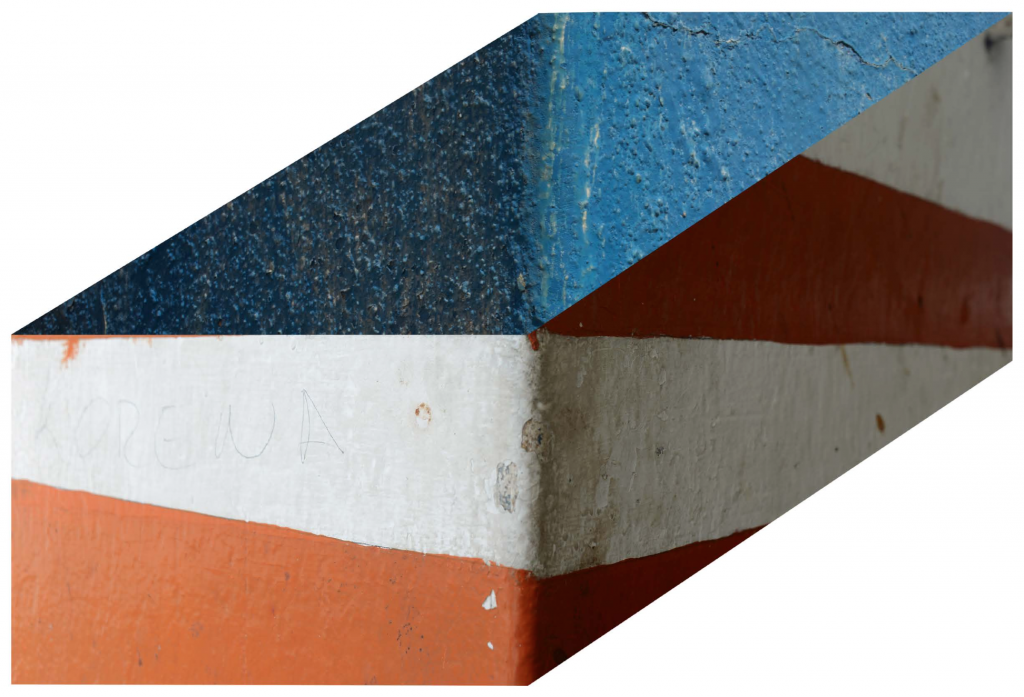
“Box 23 and E Vedado,” 2014. Color print, 18 x 18 in. Courtesy of the artist.
And a new chapter began. Let’s start with the very ambitious project No Limits that you did on Park Avenue.
Park Avenue is definitely the most ambitious thing that I’ve been involved in in the last 15 years. The gallery that I work with recommended I submit a proposal to the Park Avenue committee and I was a little bit reluctant because I’m not very interested in the type of work that is on Park Avenue. But at the same time, I thought that this street that is so beautiful would bring a lot of visibility to my work, which I wanted to take to my advantage. Obviously because I’ve been working with architecture for so many years in different ways I thought that it was a great opportunity to address issues that I have been dealing with in the past and put it on Park Avenue as a conclusion to this period of work and to introduce my work to New York. I initially wanted a very easy piece, something that people could grab immediately where people wouldn’t necessarily need to go and think about it because it’s so deep and so special that they need to rethink their life or whatever, no, no. I wanted it to be something simple. And the first thing that I wanted was to use landmarks that are very familiar, not only to New Yorkers, but to people in general, people who visit New York, people who know New York from afar and that type of thing.
I included the Empire State Building, the Chrysler, and other buildings that are known and are important architecturally because they represent a period of architecture that I’ve always been interested in, that early New York of the ‘20s and ‘30s when things were starting to pop up in the city and when the verticality of New York started being something. An architecture that changed not only New York but started pushing the boundaries of architecture around the world—those very early days when I started to draw the studies, I was attracted to the idea of dealing with New York in that setting, in which I was a foreigner but didn’t want to be one. I wanted to be a participant; I wanted to be someone who can bring other points of view to a city that sometimes feels like it’s going to crush you. Based on that, I started to build sculptures or prototypes that were actually buildings in different shapes. And those shapes sometimes allude to something else—it could be architectural elements, or maybe a fire hose. What is the meaning of creating a building that is coiled like a fire hose? Very simple—architecture and nature. Even when it represents a tower, it is a structure of fragility, and part of that fragility is a moment in which the building for whatever reason will be in danger and will need a fire hose. I am trying to create a metaphorical relationship, which is why, apart from that first object—The Room of All, 2009, that was this object that connected art to the economy—I created these fire hose-like buildings. But then I also created a spinning top. Spinning tops for kids are so meaningful, but I love the metaphor of the spinning top because you make it dance, and if you stop, it stops, and then everything stops. For me, to use spinning tops as part of the metaphor of No Limits was very important because it’s somehow related to how society functions and the power that we give to make things work. Having all of those elements at hand helps me a lot to build this other city—a parallel city, parallel to New York—that is not perfect; it has failed. It is a city that is weak, but at the same time it is a city that can be joyful, that can be happy, but I think it goes to both ends. That’s why for me No Limits feels like a critique of the idea of how power for the sake of power can be limitless, but it can also be fragile.
I’ve been explaining in interviews that when we were filming the documentary based on this project we were pointing a camera toward a top that nobody knew could rotate, and all of a sudden a kid approached it and started rotating the spinning top. For me that was magical, because one of the things I was pursuing was letting people know they can interact with the pieces. You don’t put a sign that says “you can play with this.” When you approach it and you see that this thing can rotate and you do it and it happens . . . wow, that’s beautiful. To see that kid making the 15 to 20-foot-tall top rotate, I realized that people are in power to change and control things themselves, and he just went there and he did it and it happened and he felt happy. That moment to me was very important.
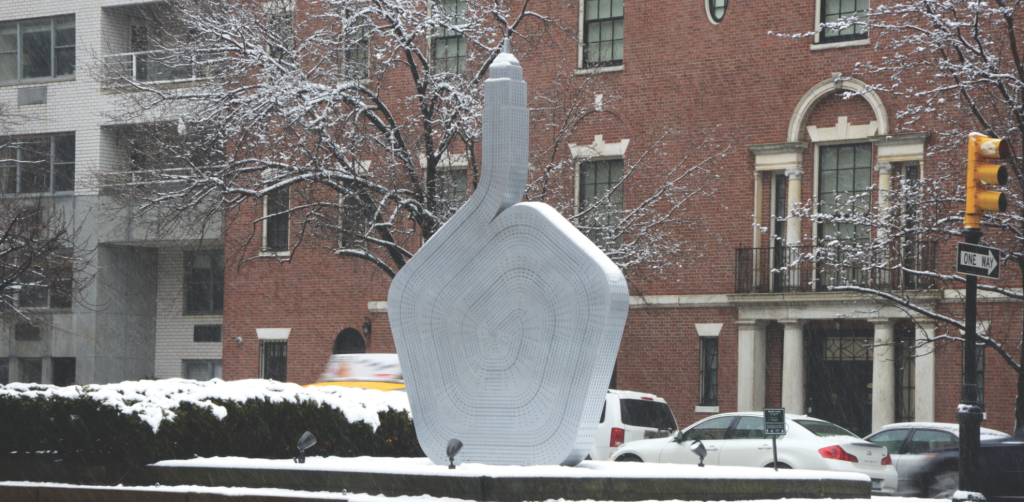
“Empire,” 2013. Steel. 14 x 9 x 2 ft. Photograph by Alexandre Arrechea. Courtesy of the artist.
I would like to use that image. I wanted to talk to you a little bit about your process. On the one hand we have the handmade that we can categorize as the drawings, and then on the other we have the fabricated. Collaboration comes in with fabrication, so I was interested in that, and then of course the relationship of the drawings to the installation and the sculptures. You were talking about your father and the drawings, but in order to make the drawings work and happen he needed the collaboration of others to complete the monster machines, and it seemed really amazing. We’re here talking about something similar to what your father did.
Absolutely. I think it was part of the essence in the beginning.
I was just curious about how there’s always this relationship between the handmade and the fabricated. Can you share some of how the process changes from one to the other and how they have a dialogue with each other?
I have practiced working with the drawing and the fabricated object for so many years, but I’m always trying to find new angles to bring in to enrich that process. Initially when I was doing my work, that process was very simple. You make the drawing and after that you create the sculpture. When I was working with Los Carpinteros we would call those drawings “letters.” Letters that we wrote to each other in order to understand what we were thinking, and to share the idea with the other and let them understand it, which somehow built a dialogue that is apart from the drawing. When I ended that type of relationship with my work there came a new moment, and I remember when I started creating this series of reminders that I saw for the first time in San Francisco, which are these drawings that are made out of magnetic strips on metal panels. They were in between being a drawing and being a sculpture. I loved the idea of the drawing that can be renewed and changed into a different shape or situation.
Then I was in this period where I wanted to create drawings that were not related to the possibility of making a future sculpture, but those were drawings for the sake of being an idea painted on paper. Recently I have been trying to twist this relationship between drawing and sculpture. I am calling the drawings in my recent exhibition The Map and the Fact “maps,” because maps help us follow certain paths and describe what we were thinking and our realities at the time of making the drawing. I created a drawing, but I didn’t want to build a sculpture based on the entire drawing. I thought, what if I choose one little portion of the drawing and create a sculpture based on that?
In this case, the map is a drawing based on a sort of upside down world map, which has been confusing for people because they aren’t used to seeing the world that way. And then you have the sculpture, which resembles a plowed field because of the shape of the lines taken from a portion of that map. These days we are living in this dilemma of globalization where people want everything but at the same time want to eat a homegrown tomato, you know? Because it’s tastier, it’s healthier, and all that. Part of the recent work is about localization. I am trying to bring in this problem through the relationship between drawing and sculpture, especially since these days I’m traveling back and forth a lot and you sometimes want to feel a sense of being at home and the only way to pursue that is to build in your mind this utopian place. I think for me and for you, and for many of us who are in that situation, we are trying to build this place that actually doesn’t exist, because you have to take a little bit of here and there and start to build up this fictitious utopia. I’m trying to connect this relationship between the drawing and the sculpture and all these problems that we are now in. I don’t know, sometimes I accomplish it but sometimes I don’t.
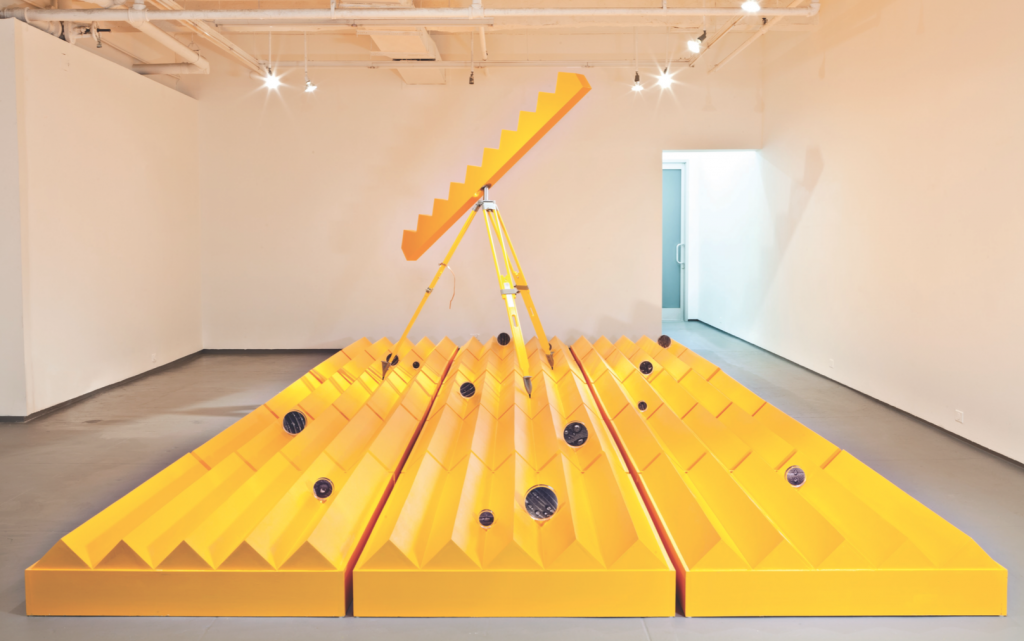
“The Fact,” 2014. Wood, acrylic embedment, metal 30’ x 12’ x 9’ foot. Photograph by Geandy Pavon. Courtesy of the artist.
You’re talking about a certain kind of reversal that you’re doing, if the drawing comes first and the sculpture comes second or the other way around, but I think you’re talking about a departure.
Right now, I think these new drawings are closer to a painting than a drawing, because I don’t reproduce that drawing. It’s more like the energy of the drawing rather than the measurement and the size of the object that I am trying to build on the paper.
But at the same time the drawing in this case (The Map and the Fact) has a relationship to the floor piece. It’s as if they are one piece.
Absolutely, I want to have a dialogue between the two of them. I don’t know if I was clear about that, but rather than pursuing a finished object made from a drawing, this time it is more like building context instead of a sculpture. I see this sculpture sort of like an island somehow, because the yellow platform with all these drops of water encapsulated in this Plexiglas are an isolated landscape that is trying to build something new. I’d rather hear the water, the idea of the plowed field, the essence of things, where things start to grow up. You clean the soil and you create this field and you bury the seeds and water them and eventually you’ll have a tree or a plant or whatever, and I think it’s in the ideas where we start cultivating more portions of our lives—not the big aspects where we can get lost, you know?
So now we have the drawing that relates to the idea of the world map, the entire world map, and we are trying to cover every aspect of the world where we travel, but we are losing the essence of things, and I want people to rethink these terms. Like I said initially, people prefer now the homegrown tomato because it’s healthier and tastes better than a tomato that comes from nowhere, that you don’t know how it was grown and all that—I feel right now the necessity of relating to a small portion of my life rather than a larger map. You know how this works, you just create an environment and situations.
Does this mean that we have an Alexandre Arrechea project involving a small tomato garden?
I don’t know! But the idea attracts me a lot right now.
What I’m getting from you and I’m seeing is that you are now shifting. The work that you’re doing now, and the relationship between the function of the drawing and the sculpture has differed from, let’s say No Limits, where you were creating a drawing of the top with a building on top and next to me was a sculpture of the top with a building on top.
Right, exactly, exactly.
![[sequence] "MetLife," 2013. Steel, polymers. 16 x 5 ft. Video still from NOLIMiTS documentary. Photographs by Juan Carlos Alom. Courtesy of the artist.](https://www.sfaq.us/wp-content/uploads/2015/01/Screen-Shot-2015-01-02-at-9.42.17-AM-1024x532.png)
[sequence] “MetLife,” 2013. Steel, polymers. 16 x 5 ft. Video still from NOLIMiTS documentary. Photographs by Juan Carlos Alom. Courtesy of the artist.
It is great that you mention video at this time. With The Map and the Fact, the relationship of the drawing and the sculpture became more problematic than it was with previous works. Now I want to come back to video and continue my particular investigation on space in art and architecture. Works such as White Corner have been very instrumental in this return. Recently the Bronx museum in N.Y. has given me the opportunity to use their studio facilities for a certain period of time. I want to experiment with creating a new series of video installations involving the evolution or expansion of space in museums. A few years ago I started a series of drawings that reflected on the creation of new spaces in museums. The titles were like 34 New Spaces for the National Museum in Havana or 20 New Spaces for Reina Sofia Museum in Spain and so on. Later I abandoned the series. Now I have come back to it and it will be very interesting to use video. Let’s say I want to create ephemeral spaces in museums using video—how am I going to develop this? I certainly don’t know at this moment. But this idea has become an engine to start working again with this medium.
I have always been interested in the idea of art as a platform that makes possible other things and brings reflection to any given subject. With White Corner, for the first time I reflected on the relationship between architecture and video; how space conditions the video projections and somehow helps to reinforce the theatrical act depicted in the two opposing images that I used in that particular case. At the same time video creates a kind of awareness of the space. You don’t only look for what is happening in the image, but you want to walk around and see behind the wall where the image is projected because it is also important. It is not merely a surface for the image; it is part of the essence of the work. Since I developed this project a few years ago I have been dying to continue this investigation. I know there is a lot to be discovered. Let’s say I want to create ephemeral spaces with video and architecture using, for example, the Bronx Museum as a subject. Then this installation could be exhibited at Reina Sofia Museum or any other space. A “museum” inside the museum. Fusing institutions in a different manner.
On the other hand I want to continue developing sculptures in dialog with specific architecture. I recently finished a sculpture in Madrid, Sledge Hammer- Alamar, which targeted the architecture built in the seventies and eighties in Cuba, specifically the housing projects imported from socialist eastern countries. With this sculpture I am commenting on the impact of this type of architecture in the urban landscape of Cuba and Havana in particular and the subculture generated in these places. The piece is made out of painted steel and wood—when you look at it you want to lift it and use it. At least this is what happened to me. It is a provocative object. In this sense I link the energy of this sculpture to Black Sun-, the animated video of a wrecking ball that was projected against the NASDAQ building in Times Square in N.Y. back in early 2010. I believe I haven’t lost the desire for questioning or simply provoking a slight smile.
Like father like son.
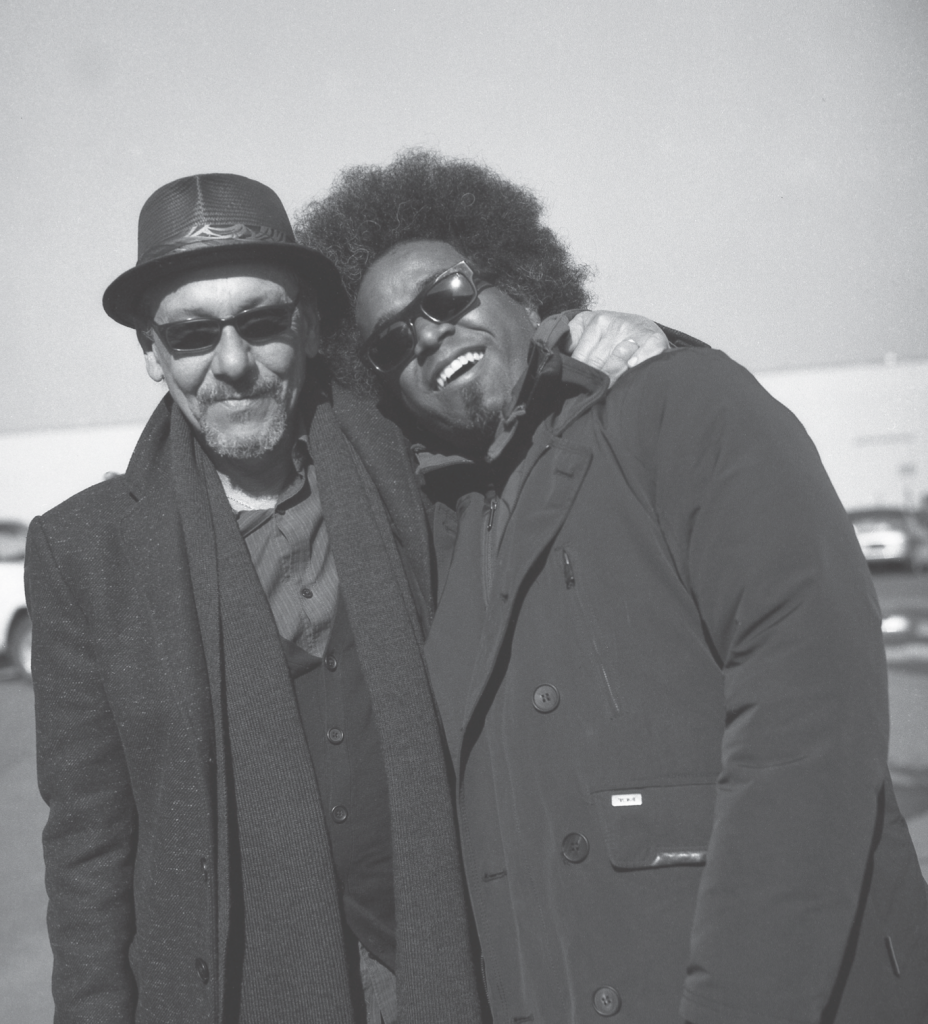
Tony Labat and Alexandre Arrechea, 2013. Photograph by Juan Carlos Alom.
